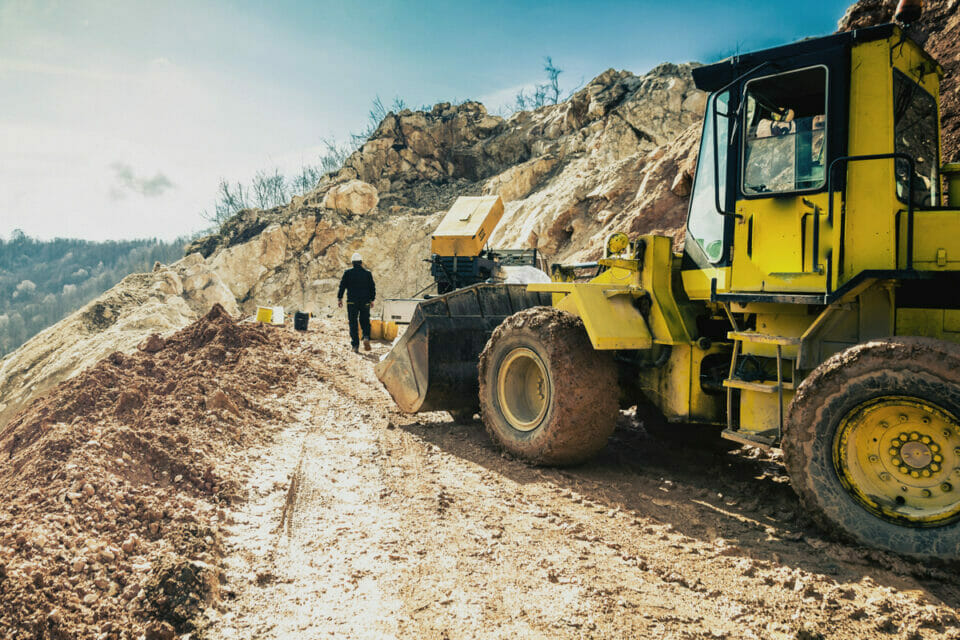
Holiday Bonus Episode: Safety Tips You Need This Season | Risk Matrix Episode 122
THE RISK MATRIX Cutting-edge podcast on occupational safety and risk management. Hosted by industry titans: JAMES JUNKIN, MS, CSP, MSP,…
Companies should consider implementing these five sustainable mining practices to combat negative social and environmental change.

Mining’s role in the global economy becomes more and more prominent as the population grows and the demand for metals and minerals increases. However, companies will continue negatively influencing social and environmental surroundings without establishing sustainable mining practices.
Fortunately, some involved in the mining industry are beginning to take steps to counteract the damaging effects of years of irresponsible extraction practices. These participants include professionals and individuals from within and outside the sector who are pressuring companies to minimize their carbon footprint and adverse impact on local communities.
As a result, more companies are taking new measures to foster responsible processes, and this article highlights five sustainable mining practices these businesses should consider to lessen their adverse social and environmental effects.
High unemployment rates and increased poverty can lead to increased illegal mining and infrastructure theft in unused shafts. The groups involved in these unlawful practices typically have little regard for environmental protection or safety, resulting in several mining area hardships, including:
While more policing and security are required, sustainable miners can also develop ways to deal with the underlying social and economic issues that support illicit mining. These strategies might include raising awareness of the risks a reduced “life of mine” poses to the community, the environment, and the local economy.
Modern mining techniques cause significant environmental disruption, such as deforestation, air pollution, and severe land erosion.
Worse, this erosion often continues for years after a mining company has ceased operations, resulting in:
However, there is no guarantee that this damage will last forever. Mining companies have access to numerous land rehabilitation strategies that restore the productivity of mined land and potentially quicken its natural recovery.
For instance, companies can use biosolids to replenish eradicated topsoil in just a few months. The newly sown and watered soil can soon generate plants that prevent ongoing soil erosion. Combined with other rehabilitation methods, these technique types, such as filling excavated areas with waste rocks, can reduce mining-related disruptions.
Mining businesses can also transition to more environmentally friendly machinery and processes prioritizing environmental responsibility and energy efficiency to lessen their influence on climate change. Those strategies might include:
Mines are sometimes the largest single source of employment in local communities where these natural resources are prevalent, particularly in more remote locations with fewer employment options.
Mining companies cannot, however, continue to offer these opportunities indefinitely because these minerals and metals are of finite supply, and the operation will terminate at some point. Therefore, it is crucial to diversify economic activity in these communities and create financially and commercially viable options that are not reliant on mining.
Miners with a purposeful, long-term social license plan frequently take the lead in creating and nurturing new, community-based enterprises.
For example, local supply chain-focused companies can grow to meet the mine’s short-term service needs and expand their geographic reach to serve customers in other areas as their technological and financial resources increase.
Sustainable miners may also actively manage the economic transition of their host communities when working in tandem with a solid local skills development and training philosophy to ensure the end of mining operations does not result in financial devastation.
Conventional mining processes can severely impact the environment, and some standard practices, such as open pit and underground mining, pose some of the most significant environmental concerns.
While still extracting essential minerals, low-impact mining techniques seek to reduce the harmful effects of mining operations on the environment and society. These techniques, which concentrate on lowering energy use, water pollution, and habitat degradation, include the following:
By utilizing these processes, companies might dramatically lessen surface disturbance at mining sites, cut soil erosion, and transport less backfilled material.
Sustainable mining practices are key to harmonious coexistence between the mining industry, surrounding communities, and the environment. And as companies navigate the challenges of resource extraction in an increasingly conscious world, it becomes imperative for them to embrace eco-friendly and responsible approaches.
Furthermore, as the industry looks towards a future that demands economic growth and environmental stewardship, the transformation towards sustainable mining practices emerges not just as a choice but as an ethical imperative to safeguard our planet’s delicate balance for future generations.
Contact us today to learn more.


THE RISK MATRIX Cutting-edge podcast on occupational safety and risk management. Hosted by industry titans: JAMES JUNKIN, MS, CSP, MSP,…

THE RISK MATRIX Cutting-edge podcast on occupational safety and risk management. Hosted by industry titans: JAMES JUNKIN, MS, CSP, MSP,…
We’ll send you practical and insightful supply chain risk management info that can benefit your business. Plus, important company updates that keep you in the loop.
